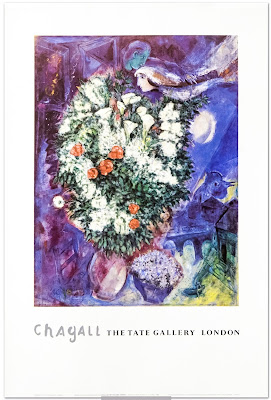The Struggle of Classical Realism in a Virtual World: My Journey as an Artist
I am currently building an art career. This is not my first career; I have years of experience in business. But, I find myself navigating a world that is evolving faster than I ever imagined. The emergence of new technologies has transformed many aspects of society, and art is certainly no exception. In particular, the rise of virtual reality (VR) technology has presented both a challenge and an opportunity for traditional art forms like classical realism, which I hold dear. Through this perspective, I want to share my experiences and thoughts on the intricate dance between classical realism and our modern digital landscape.
The Impact of Virtual Reality on My Art
The
way people experience art has shifted dramatically with the introduction of VR
technology. Before venturing into this second career, I cherished the beauty of
classical realism, with its focus on technical mastery and the tangible world.
However, I soon realized that VR offers immersive, interactive experiences that
often overshadow the more spartan elegance of traditional forms. While I take
pride in my paintings, I must acknowledge the captivating allure of VR art that
draws viewers into dynamic realms that I could never create with just a brush
and a canvas.
As
an artist specializing in classical realism, I've found it daunting to maintain
relevance in an art market that increasingly gravitates toward novel and
engaging mediums like VR. The challenge of making my work resonate in a
landscape filled with boundless digital creativity can feel overwhelming. It's
a struggle that many of us in the traditional art world face, and it's a battle
that we're fighting with all our passion and dedication.
Facing the Challenges of Recognition
Gaining
recognition as a classical realist artist in today's predominantly digital art
market is challenging. I've come to realize that proficiency in a variety of
technical skills is essential. Digital painting, graphic design, video editing,
and social media management are necessary tools of the trade in this age. As an
artist whose focus has traditionally been on the meticulous brushstrokes and
textures of classical techniques, adapting to this digital skill set can be
intimidating and time-consuming.
Moreover,
keeping up with the pace of technological advancements requires constant
learning. Each new tool or platform demands my attention, often pulling me away
from the craft I wish to perfect. The pressure to diversify my skills while
trying to hone my artistry can be daunting, but I believe both worlds coexist.
It's a constant struggle, but it's one that I'm willing to face head-on because
I believe in the power of art to transcend boundaries.
Maintaining the Relevance of Classical Realism
Despite
these challenges, the art community still highly regarded classical realism.
Its unmatched authenticity and originality set it apart in a world where
digitally replicated works are increasingly common. My paintings, each a
tangible masterpiece, carry the unique touch of my hand that digital art often
struggles to replicate.
In
this digital age, I take comfort in that my original creations have intrinsic
value that can appeal to those who appreciate the uniqueness of the tactile
experience. By emphasizing the distinct nature of my works, I can connect with
collectors and art lovers who treasure authenticity over mass production.
Adapting Traditional Techniques with Modern Technology
While
the rise of digital art can seem challenging, I see it as an opportunity for
growth and innovation. I've begun exploring ways to integrate my classical
techniques with modern VR technologies. This blend is not about abandoning my
roots but forging a bridge between art's past and future.
For
instance, I've started using digital sketches to aid in my creative process
before committing to a final piece on canvas. This approach allows me to
experiment and refine my ideas while merging the precision of the digital realm
with the authenticity of my traditional methods. Additionally, I've explored
the possibility of creating virtual galleries for my work. By showcasing my
classical art in immersive online spaces, I can reach audiences far beyond my
physical location, enriching the experience of classical realism for a global
audience.
Navigating Authenticity in the Digital Era
One
of the most poignant questions I grapple with is the notion of authenticity in
today's digital age. Traditional art has long been revered for its uniqueness—a
quality that differentiating originals from reproductions. However, the digital
realm often blurs these lines, allowing for perfect replicas of original works.
This situation forces me to consider the actual value of my art. Is it solely
tied to its originality, or can a digitized version also capture its essence?
It's a question that I'm constantly pondering because I believe that the unique
value of traditional art lies in its authenticity, which I'm committed to
preserving.
These
reflections compel me to reconsider what constitutes the value of my work and
how technology shapes our understanding of art. The evolving relationship
between my classical techniques and modern advancements opens new avenues for
exploration, even as I maintain my commitment to authenticity.
Conclusion: Embracing the Future
My
journey as an artist within the realm of classical realism amid the rise of
virtual technology underscores the dynamic interplay between tradition and
innovation. While I recognize the digital landscape's formidable challenges, I
also see opportunities for adaptation and growth. By embracing the unique
qualities of my traditional art and exploring creative ways to integrate modern
techniques, my passion for classical realism can continue to thrive.
Ultimately, it is the authenticity and originality of my work that captivate
me—and I hope, in turn, to capture the hearts of art enthusiasts even in this
ever-evolving digital age.




Comments
Post a Comment